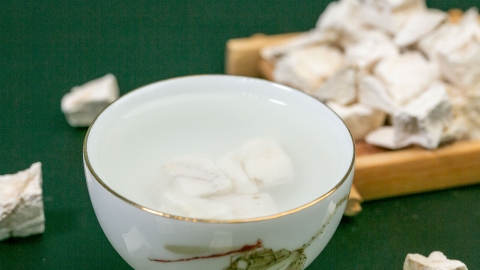Is it better to eat Kudzu root raw or cooked?
Generally speaking, both raw and cooked kudzu root have their own benefits, and the choice mainly depends on individual needs. It is recommended to consume kudzu root under the guidance of a physician. The detailed analysis is as follows:

Consuming raw kudzu root mainly emphasizes effects such as relieving muscle tension and reducing fever, promoting saliva secretion to relieve thirst, and aiding in the eruption of rashes. It has a cool and crisp texture, similar to chewing sugarcane, and is suitable for individuals with a hot body constitution, dry mouth and throat, or sore throat. Additionally, raw kudzu root can help elevate yang energy to stop diarrhea, promote blood circulation, and alleviate alcohol toxicity. However, it should be consumed in moderation to avoid discomfort caused by excessive intake.
Cooked kudzu root primarily focuses on functions such as elevating yang energy to stop diarrhea and promoting circulation of blood and qi. It has a soft and sticky texture, similar to sweet potatoes, and is suitable for individuals with a cold body constitution, weak spleen and stomach function, or those prone to diarrhea and loose stools. Cooking kudzu root reduces its potential irritation to the spleen and stomach. Common cooking methods include stewing kudzu root in soup, cooking it into porridge, or steaming it. Whether consuming it raw or cooked, it is advisable to follow the guidance of a TCM practitioner or nutrition expert to ensure effectiveness and safety.
In daily diets, attention should be paid to dietary diversity and moderate intake of various nutrients to ensure balanced nutrition.





